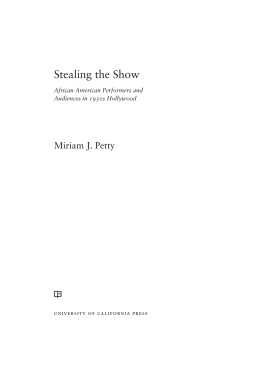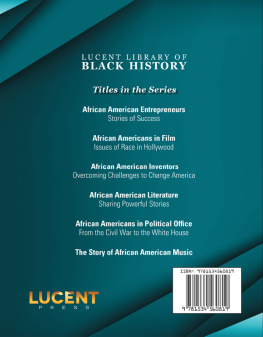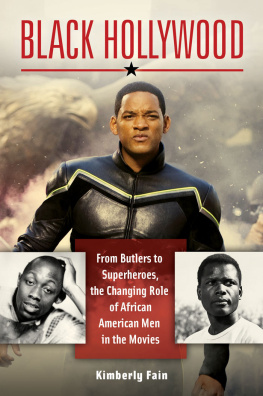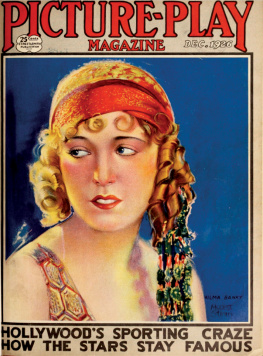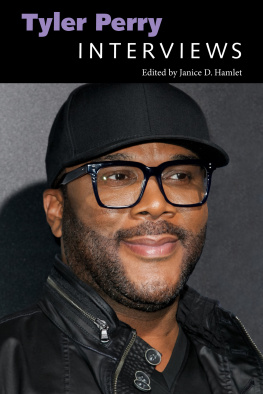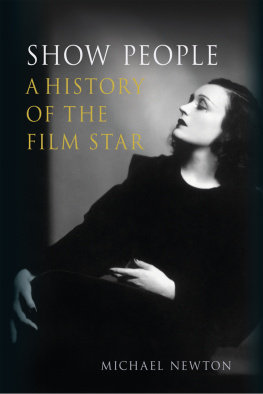Acknowledgments
INSTITUTIONAL THANKS
Portions of this book were presented at the Chicago Film Seminar, the Society for Cinema and Media Studies national conference, the Princeton University Society of Fellows colloquium series, the Northwestern University Performance Studies Institute, the DuSable Museum of African American History, and the American Studies Association national conference.
This book could not have been completed without the support I received as a postdoctoral fellow with the Princeton Society of Fellows, in residence with Princetons Department of English and Center for African American Studies.
This book was also completed with the support of Kerry Ann Rocquemore and the National Center for Faculty Development and Diversitys faculty bootcamp program.
I wish to thank the Crisis Publishing Co., Inc., the publisher of the magazine of the National Association for the Advancement of Colored People, for the use of the image of Nina Mae McKinney first published in the March 1930 issue of The Crisis.
I wish to thank the Defender, for the use of the image of Bill Bojangles Robinson first published in the October 15, 1927 issue of the Chicago Defender.
Thanks are due to the Northwestern University Research Grants Committee for their generous grant providing subvention funds for this book.
Many librarians, collectors and archivists helped to make this book possible. I wish to extend my thanks to:
Barbara Hall, at the Margaret Herrick Library of the Academy of Motion Picture Arts and Sciences
Camille Billops and James Hatch, at the Hatch-Billops Collection in New York City
Julie Graham and Lauren Buisson, at the University of California, Los Angeles, Arts Special Collections
Mark Quigley, at the University of California, Los Angeles, Archive Research and Study Center
Ned Comstock, at the University of Southern California, Cinema Special Collections
Sandra Lee, at the Warner Brothers Archive at the University of Southern California,
Renea Henry, at the Amistad Collection
The Connecticut Historical Society
Karen Nangle and Anne Marie Menta, at Yale Universitys Beinecke Library
Steve Wilson and Albert Palacios, at the University of Texas at Austins Harry Ransom Centers (the David O. Selznick Collection)
The Will Rogers Memorial Museum in Claremore, Oklahoma
The Eastman House in Rochester, New York
SPECIAL THANKS
I used to wonder why book acknowledgment pages were so long; now I know better. The village that builds a scholar from scratch, creates context and history, and actively offers love, encouragement, tough talk, more love, reading, writing on site-ing, friendship, consumption of strong drink, intellectual honesty, and hope in the long road to build a book is indispensible; their essentiality to this project cannot be underestimated. I am certain that Ive lost some names along the way here, and for any glaring omissions, I do sincerely beg pardon.
I am a proud product of the Chicago public school system; my mother, Naomi E. Jackson Petty, was a public school teacher for over thirty years herself. So I would be less than honorable if I did not thank and acknowledge my teachers at Beulah Shoesmith Grammar School, especially Ms. Dolores Snyder, Ms. Joanna (Papageorgiou) Lalos, Ms. Hunter, Ms. Mican, and Ms. Haynes; my teachers at Louis Wirth Experimental Middle School, especially Mr. Freeman Willis, Ms. Selby, Ms. Webster, Mr. James Mooney, and Mr. James Johnson; and my teachers at Kenwood Academy High School, especially Ms. Bonnie Tarta.
As an undergraduate at Carleton College in Northfield, Minnesota, I was taught by a faculty of dedicated and generous teachers, whose model I still hold up before myself in the classroom. My thanks go out to Harry M. Williams, Diethelm Prowe, Mary Moore Easter, Jewelnel Davis, Cherif Keita, Kofi Owusu, John Ramsay, and Richard Crouter. And I am also thankful to my Carleton friends, who formed my first intentional intellectual circles, in the Gold Room, in Sayles-Hill, on the Bald Spot, in We Speak, at the Rueb, in Faribault, and wherever else we gathered to argue, agree, protest, pray, teach, cry, learn, laugh, and take care of each other: Maurice Lee, Audra Watson, Julia Baker, Chris Navia, Demetrius Bagley, Darwin Conner, Karen Thompson, Stephen Taylor, Stace Burnside, Lisa Bass, Cyrus Farmer, Truscee Dorham, Anjula Prasad, Ben Gill, Dara Moskowitz, Pam Rahmings, Lucy Vilankulu, Johanna Hinman, Margaret Henry, Angelina Carrillo, Alex Bannerman, Michael Bazzett, Read Winkelman, Paul Gore, Eliot Wajskol, Pat Carriere, Nate Turner, John Podezwa, David A. Johnson, Lance McCready, Beverly Boxhill, Cheryl Johnson, and Kristene Maxie.
Stealing the Show began as a dissertation written during my graduate school years at Emory Universitys interdisciplinary Graduate Institute of the Liberal Arts. I am fully indebted to the late Rudolph P. Byrd, whose mentorship, friendship, and love changed my path in life indelibly. My warmest and most especial thanks are due to the living members of my doctoral committee, Matthew Bernstein, Mark A. Sanders, and Kimberly Wallace-Sanders, for the many hours of help and encouragement that they gave me during my years at Emory. I also had a particularly amazing set of colleagues and friends at Emory, who were crucial to my intellectual growth, and to the maintenance of my sanity: Calinda N. Lee, Mimi Kirk, Michael Antonucci, Trystan Cotton, Rhea Combs, Kimberly Springer, Frances Wood, Lynell Thomas, Marsha Ford, Tony the ladies man de Velasco, Donna Troka, Eddie Gamarra, Lina Buffington, John Willis, Yanique Hume, Aldo Valmon-Clark, Stuart Patterson, and Petrina Dacres. At Emory I was also fortunate enough to have a number of professors and administrators who supported and mentored me from outside my committee and my department, and who deserve my gratitude: Randall Burkett, Leroy Davis, Leslie Harris, Nathan McCall, Paula Gomes, Charlie Shepherdson, Chris Levenduski, Robert Paul, Dana White, Karen Fulton, and Virginia Shadron.

